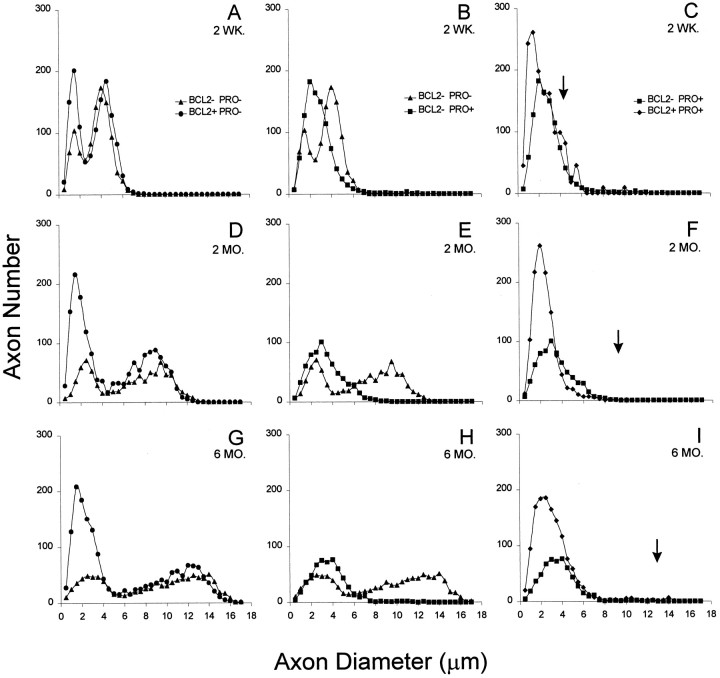Fig. 5.
Increased expression of Bcl-2 selectively increases the number of small, not large, motor axons in mutant NF-L (Pro) mice. Axonal areas were calculated for all axons within an entire L5 motor root using a computer-imaging program and plotted as the frequency of appearance of diameters corresponding to circles of equivalent areas. Distributions of 2-week-old (A–C), 2-month-old (D–F), and 6-month-old (G–I) animals from all four genotypes are shown. Wild-type mice (▴) have the expected bimodal distribution of small and large motor axons. Bcl-2–overexpressing mice (●) also have two axon size classes but exhibit an increased number of small axons. Mutant NF-L (Pro) mice (▪) selectively lose the large motor axon population. Mutant NF-L (Pro) mice overexpressing Bcl-2 (♦) have greatly increased numbers of small motor axons but still lose large motor axons. Points represent the averaged axon size distributions of two mice for each genotype and age.Arrows indicate the mean size of the population of large motor neurons found in normal, age-matched animals.

